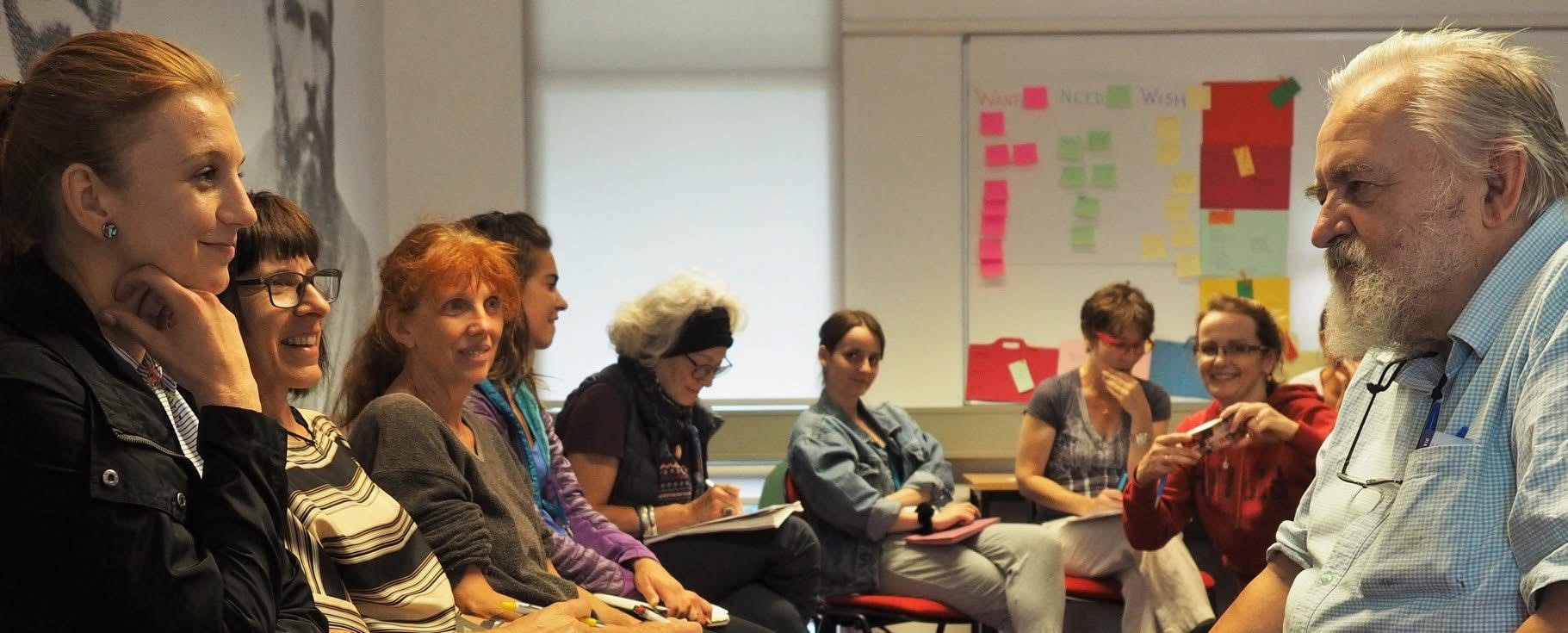Engaging Students with a Story

From the Editor
Twice a month, Jamie Keddie sends out the LessonStream Post – a story or storytelling idea for the classroom. It's free to sign up and you can do so here: https://lessonstream.com

As we all know, auxiliary "do" is used in present/past simple questions and negative sentences:
- "Do you know ...?"
- "I don't know ..."
In this case, the main verb is know.
But of course, auxiliary "do" can be used in another way. And there is a great example in Sam Cooke's Wonderful World. Can you spot it?
Don't know much about history
Don't much about biology
Don't know much about science book
Don't know much about the French I took
But I do know that I love you
And I know that if you love me too
What a wonderful world this would be
Click here to hear the song on YouTube
In this case, the auxiliary "do" pops up in order to accentuate the positive. It provides balance.
I don't know this but I do know that
The baby gorilla joke
Once you have introduced this to your students, you can give them a task.
Ask students to copy the following text from the board or screen and try to work out the missing punchline as they do so. 
Point out that the punchline contains a "do" auxiliary but is not a question or a negative.
A man finds a baby gorilla in the street and takes it to the police.
He asks a police officer, “What should I do with this baby gorilla?”
The police officer tells him to take it to the zoo.
A week later, the police officer sees the man again and he’s still with the baby gorilla.
“Didn’t I tell you to take this baby gorilla to the zoo?”, asks the police officer.
The man replies, “………………………………………………………….."
Make sure that students don't shout out their answers but write them down first.
Answer: “I did take it to the zoo. And today I’m taking it to the cinema.” (Again, auxiliary "do" is used to accentuate the positive. This is a great way to deal with an indirect contradiction which is the case here: the police officer implies that the man did not take the baby gorilla to the zoo.)
40 ideas for using story in the classroom
This activity comes from the latest post in the LessonStream Story Course. It is a list of 40 ideas to get students interacting with stories and narrative texts.
The idea that I have just described is No. 8 Board-to-book transcription.

Copying texts from the board might seem a bit retro. But word-for-word transcriptions are often recognised as being effective for encouraging learners to notice language.
However, it's no good just asking students to copy a text without also providing them with a thinking task (e.g. "What is the missing punchline?")
Here is another example which is taken from an old LessonStream activity. Ask students to copy the text below and think about the following questions:
1. Where did this text come?
2. What is it?
“Joe brought it home from the office. He gave it to Betty and one of his kids and to Betty’s mother. But Betty’s mother went back to California the next day. On her way to the airport, she gave it to a cab driver, a ticket agent and one of the charming stewardesses. At school, Joe’s kid gave it to some other kids and Mrs Meryl got it and gave it to her husband. In California, Betty’s mother gave it to her best friend Dotty. But Dotty had a heart condition and she died. But before she died, Dotty gave it to her girlfriend, the mailman, the paper boy, and her vet when she went to pick up her Chihuahua.“
* * * Click here for the answer * * *
Please check the Pilgrims f2f courses at Pilgrims website.
Please check the Pilgrims online courses at Pilgrims website.
Engaging Students with a Story
Jamie Keddie, SpainOvert Teaching: Setting the Stage for Effective Feedback
Mark Heffernan, UK;David Byrne, IrelandPop Culture Conventions and Literacy Learning
Paolo Nino Valdez, Philippines
